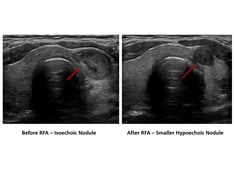Hello. This is Dr JoAnn Manson, professor of medicine at Harvard Medical School and Brigham and Women's Hospital in Boston, Massachusetts.
I want to talk with you today about the vexing question of whether to routinely screen asymptomatic nonpregnant women for thyroid dysfunction, and if subclinical hypo- or hyperthyroidism is found, whether to routinely treat these conditions. This is a controversial issue. Moreover, given how common these conditions are, we have surprisingly little clear guidance from randomized clinical trials and other research studies to balance the benefits and risks.
The US Preventive Services Task Force (USPSTF) recently released its updated guidelines[1] on this subject, published in March 2015 in Annals of Internal Medicine. They concluded that there is insufficient evidence to advise for or against routine screening. This is based largely on the absence of clear guidance from randomized clinical trials as to the balance of benefits and risks of treatment of subclinical or preclinical disease. I want to mention, however, that other professional societies do recommend either routine screening for thyroid dysfunction or else a screening of high-risk subgroups.
Specialists Recommend Aggressive Case-Finding
The American Thyroid Association (ATA) recommends[2] routine screening beginning at age 35 and then every 5 years. The American Association of Clinical Endocrinologists (AACE) recommends[2,3] an aggressive case-finding approach with screening of several high-risk groups. These groups include:
Men and women aged 60 years or older, because thyroid disease is common in those groups and because such individuals are often asymptomatic or have minimal or atypical symptoms;
Adults with a history of other autoimmune disorders, such as type 1 diabetes or pernicious anemia;
Adults with a history of thyroid surgery, previous thyroid disease, an abnormal thyroid examination, or who are taking medication that may affect thyroid metabolism, including glucocorticoids and sex hormones such as estrogen replacement therapy, which can affect thyroid-binding globulin and thus the amount of thyroid hormone required;
Adults with a family history of thyroid disease, because of their higher risk of developing thyroid disease; and
Women who are planning to become pregnant or who are already pregnant, because of the very high risk of undiagnosed thyroid disease in terms of fetal well-being.
Finally, the ATA and AACE emphasize the importance of continued screening of newborns for congenital hypothyroidism, which seems very reasonable.
Overall, I believe that an aggressive case-finding approach and targeting high-risk groups for thyroid dysfunction screening is reasonable. I believe that it is tremendously important to conduct randomized clinical trials and additional research to answer these questions and clarify the balance of benefits and risks of routine screening or screening high-risk groups for thyroid disease, and whether it is advisable to treat subclinical or preclinical hypo- or hyperthyroidism.
Hopefully, 10 years from now, or whenever the next USPSTF guidelines are released, we will have moved beyond the "insufficient evidence" conclusion and will be given clear guidance from the USPSTF as well.
Thank you so much for your attention. This is JoAnn Manson.
Medscape Ob/Gyn © 2015 WebMD, LLC
Any views expressed above are the author's own and do not necessarily reflect the views of WebMD or Medscape.
Cite this: Thyroid Dysfunction: To Screen or Not to Screen? - Medscape - Apr 23, 2015.













Comments